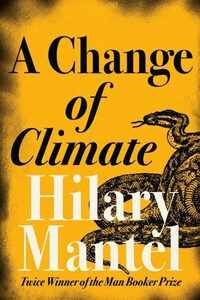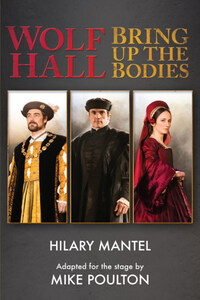Fourth Estate
An imprint of HarperCollinsPublishers
1 London Bridge Street
London SE1 9GF
This edition published by Fourth Estate 2010
FIRST EDITION
First published by Viking 1989
Published in paperback by Harper Perennial 2005
Copyright © Hilary Mantel 1989
PS section copyright © Sarah O’Reilly 2010
PS™ is a trademark of HarperCollinsPublishers Ltd
Hilary Mantel asserts the moral right to be identified as the author of this work
A catalogue record for this book is available from the British Library
This novel is a work of fiction.
The characters and incidents portrayed in it are the work of the author’s imagination.
All rights reserved under International and Pan-American Copyright Conventions. By payment of the required fees, you have been granted the non-exclusive, non-transferable right to access and read the text of this e-book on screen. No part of this text may be reproduced, transmitted, downloaded, decompiled, reverse engineered, or stored in or introduced into any information storage and retrieval system, in any form or by any means, whether electronic or mechanical, now known or hereinafter invented, without the express written permission of HarperCollins e-books.
HarperCollinsPublishers has made every reasonable effort to ensure that any picture content and written content in this ebook has been included or removed in accordance with the contractual and technological constraints in operation at the time of publication
This book is sold subject to the condition that it shall not, by way of trade or otherwise, be lent, re-sold, hired out or otherwise circulated without the publisher’s prior consent in any form of binding or cover other than that in which it is published and without a similar condition including this condition being imposed on the subsequent purchaser.
Source ISBN: 9780007172894
Ebook Edition © APRIL 2010 ISBN 9780007354931 Version: 2018-07-31
The Church in this story bears some but not much resemblance to the Roman Catholic Church in the real world, c. 1956. The village of Fetherhoughton is not to be found on a map.
The real Fludd (1574–1637) was a physician, scholar and alchemist. In alchemy, everything has a literal and factual description, and in addition a description that is symbolic and fantastical.
You are familiar, no doubt, with Sebastiano del Piombo’s huge painting The Raising of Lazarus, which hangs in the National Gallery in London, having been purchased in the last century from the Angerstein collection. Against a background of water, arched bridges and a hot blue sky, a crowd of people – presumably the neighbours – cluster about the risen man. Lazarus has turned rather yellow in death, but he is a muscular, well-set-up type. His grave-clothes are draped like a towel over his head, and people lean towards him solicitously, and seem to confer; what he most resembles is a boxer in his corner. The expressions of those around are puzzled, mildly censorious. Here – in the very act of extricating his right leg from a knot of the shroud – one feels his troubles are about to begin again. A woman – Mary, or maybe Martha – is whispering behind her hand. Christ points to the revenant, and holds up his other hand, fingers outstretched: so many rounds down, five to go.
On Wednesday the bishop came in person. He was a modern prelate, brisk and plump in his rimless glasses, and he liked nothing better than to tear around the diocese in his big black car.
He had taken the precaution – advisable in the circumstances – of announcing himself two hours before his arrival. The telephone bell, ringing in the hall of the parish priest’s house, had in itself a muted ecclesiastical tone. Miss Dempsey heard it as she was coming from the kitchen. She stood looking at the telephone for a moment, and then approached it gingerly, walking on the balls of her feet. She lifted the receiver as if it were hot. Her head on one side, holding the earpiece well away from her cheek, she listened to the message given by the bishop’s secretary. ‘Yes My Lord,’ she murmured, though in retrospect she knew that the secretary did not merit this. ‘The bishop and his sycophants’, Father Angwin always said; Miss Dempsey supposed they were a kind of deacon. Holding the receiver in her fingertips, she replaced it with great care. She stood in the dim passageway, for a moment, thinking, and bowed her head momentarily, as if she had heard the Holy Name of Jesus. Then she went to the foot of the stairs and bellowed up them: ‘Father Angwin, Father Angwin, get yourself up and dressed, the bishop will be upon us before eleven o’clock.’














